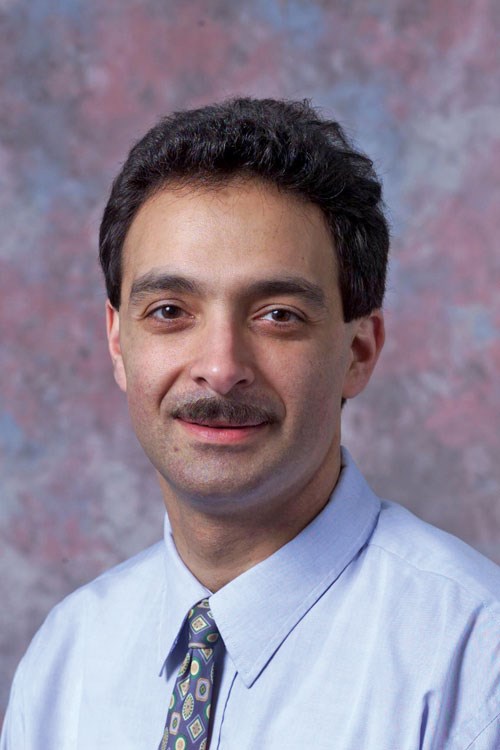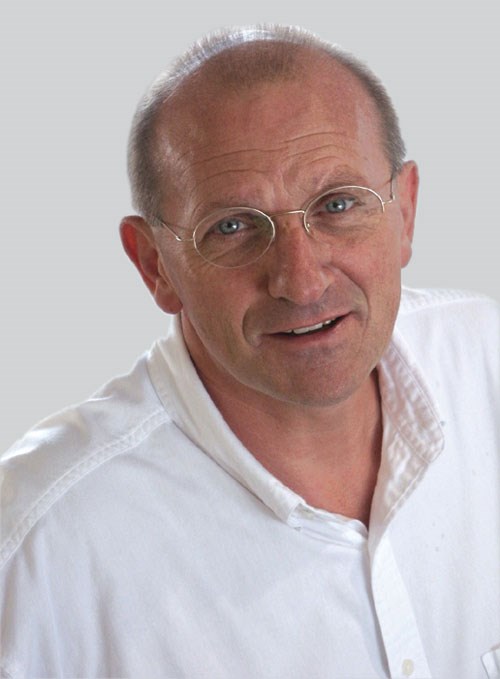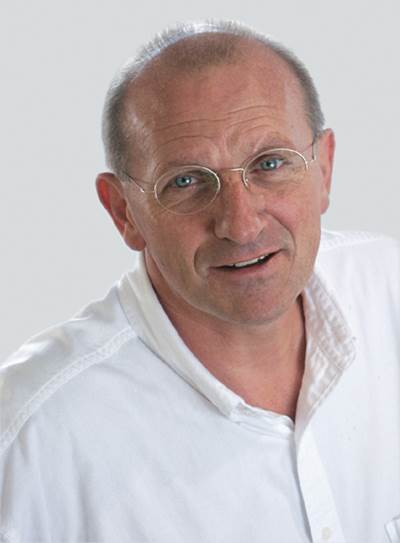The future of composites education
Experts weigh in on the weighty problems this industry faces as it confronts a serious shortage of trained personnel.
Share
Read Next
Ask the production manager at a composites manufacturing firm what is the company’s biggest need. You’re likely to hear skilled labor. In the U.S., for example, only two of 10 new-hires last out the probation period. The cost of in-house training can be thousands of dollars per technician. While some formal education programs exist, they are too few to effectively meet the current need. Moreover, program depth and content is inconsistent, and most engineering school graduates have little to no exposure to composite materials.
As the use of composites continues to expand across a wide array of industries and new technologies are developed at a faster rate than ever before, composites manufacturers are losing ground in their efforts to overcome a chronic shortage of qualified designers, engineers and shop-floor technicians.
How does our industry bridge the education gap? How do we develop a pool of college and high school graduates ready to take on careers in composites manufacturing? CT editor-in-chief Jeff Sloan put these and other questions to four seasoned composites educators (see photos and bios at right). Their answers are varied, insightful and thought provoking.
It’s been suggested in the last couple years that composites is becoming less of an art and more of a science. Do you think this is true? Why or why not?
Andre Cocquyt: Definitely true. There has been a significant acceleration in understanding composites, and the evolution is visible from design and engineering to product development and production methods. It’s amazing that a technology which is, in it’s present form, only 60 years old is now gaining traction in so many fields that have been dominated by more traditional structural materials. The reason for this success is that the technology had enough potential and surplus characteristics to survive the early empiric approach. Despite many unknowns and products made on a trial-and-error knowledge platform, the ultimate performance and lifecycle predictions of all composites products, including some of the products that have seen active duty for 50 years or more, keeps expanding. The unpredictability has diminished with the transition from craft to science: Unlike any other engineered material, composites skip a step between raw material and final product, and the ultimate properties of the final product are defined during the production process. There are now sufficient technical data available to convince even the most skeptical designer, engineer and customer about the merits of composites, but it is only recently that better fabrication methods with predictable quality results have made sufficient inroads to qualify the current technology as “maturing.” That said, it remains a science under construction. There is still a lot of research and testing to be done.
Bob Lacovara: The design of a product can be an art, however, the fabrication of composites products is a science — period. There are four fundamental elements in all composites molding: 1) The transfer of resin and reinforcement to the mold surface, 2) saturating the reinforcement, 3) compacting the laminate, 4) polymerizing the resin. Each of these elements is accompanied by requirements driven by raw material characteristics and chemistry. The chemistry of the product dictates the amount of initiator required — not the judgment (art) of the operator. Old-timers in the industry often [called it] “art” ... because they did not understand the science of the art.
Lou Dorworth: Yes, we are trying to set and follow standards within the industry and teach our students the important fundamentals about advanced composite materials and processing. There are some very basic, yet important, rules that apply when constructing laminates. For example, all laminates are designed such that the fiber angle or orientation of each layer carries the load on axis, in the intended direction, to achieve strength and/or stiffness (or perhaps flexibility in a specific direction) within the structure. When designing and fabricating the laminate, each layer plays a role in how the laminate will perform under load. In addition, the laminate must be symmetric about the midplane (as viewed through the cross-section) to ensure dimensional stability through changes in temperature.
Habib Dagher: It depends on the employees. If we are talking about engineers, short courses which bring together a combination of hands-on manufacturing and theoretical analysis/modeling provide ideal primers. Newcoming engineers who understand traditional materials need to visualize how composites come together, — how they are manufactured — before they can truly appreciate how to design with them.
One of the traditional challenges that face newcomers to composites design is to gain an understanding of material behavior and characteristics. What is the best way to quickly indoctrinate new employees?
AC: I have found this to be a challenge from my first days in the composites trade. I could not find comprehensive study materials for new-hires with a broad range of education and skill level, and ended up developing materials that fit the needs of my own employees and, later on, became widely accepted in the industry. It is possible to get the basics of the composites trade transferred to new hires in about 20 hours, provided that there is a good balance between classroom and hands-on lab time. It then takes, depending on the type of production environment, another 40 to 80 hours to get an employee production-ready. I think that a three-month apprenticeship is another great way to get a solid foundation for a broad spectrum of composites applications. And there should be one- and two-year accredited programs at college level to generate a pool of future management candidates.
BL: Standardized training is the most productive path to indoctrinate new employees. On-the-job training (learning by example) is the least effective method. Training needs to follow a predictable sequence to be productive. This begins with a macro overview and introduction of basic terms, followed by an understandable explanation of the task objectives. Once the basic premise is formed, specific how-to information can be introduced. It is not enough to know how to do a job. A worker must know why in order to appreciate the proper context for the task sequence. The bridge between technical knowledge and the real world of the shop floor is the most important element.
Our approach is to first teach the basics of composite materials and processes, with emphasis on fiber and matrix properties. We then introduce simple design theories, such as quasi-isotropic properties, balance and symmetry, etc. We focus on why these fundamental rules are so important to the performance and/or the dimensional stability of the composite structure. We find that the best way to communicate these theories is to introduce the concepts in the classroom, then take the ideas to the lab and have students build laminates to test these theories.
Manufacturers have long struggled to bridge the gap between what is designed and what can be built. Is that gap narrowing through better education, or are we stuck with a fundamental disconnect?
AC: We are stuck ... for now. The least educated group in our trade are engineers and designers, broadly speaking. Somehow, they are expected to know all this stuff, but good, comprehensive programs are not widely available, and engineers/designers who are already employed will rarely do more than attend a few seminars and maybe purchase a book or two. There [have been] several occasions when I worked on projects where the engineers and project managers were the biggest impediment, and on more than one occasion we had to redo large segments of projects at a cost of six-digit (and more) dollar figures. I think that the complexity of composites design, engineering and manufacturing is easily underestimated, and in many cases, people in all aspects of the trade are sent to their jobs with insufficient skills and tools by an equally undereducated management. Case in point is the wind blades industry, which is now encountering a range of predictable — and predicted — problems.
BL: Designers are not manufacturers and manufacturers are not designers — an obvious truism that sometimes gets lost in the process of getting a product to market. Designers operate in a world of the potential, while production engineers work in the realm of the practical. What needs to evolve is the insertion of a third party between design and production, a technically savvy liaison and problem solver who understands the vision of the designer and practicality of producing a product. That function is responsible for “realization of the possible.” [There is] a delicate balance to pushing production into new areas while redirecting over-enthusiastic designers. It is healthy for designers to stretch the boundaries of manufacturers. If not, production engineers would trend toward the most simplistic form of a product possible.
LD: That gap is narrowing as companies realize the importance of communication and knowledge transfer between design and manufacturing. For example, we have had engineers take our basic course and later comment on how much they have learned that they can apply at the design level to improve manufacturability. When a designer actually has to build a laminate with a complex configuration that may not be necessary to the performance of the laminate, they quickly learn that designing with manufacturability in mind will not only improve the end product, but make it easier to build and, perhaps, require less time and effort, thus making the product more cost-effective. All designers should be required to take a hands-on class to really understand manufacturability.
Blank check question: If you were given $25 million to launch a training program, how would you use it? What would be your priorities be? What need would your program meet that is not being met now?
AC: We had close to that sum to start with in [the] Maine [Advanced Technology Center] for a three-year grant, which is wrapping up this year. I think, overall, that the results will be significant and change the role of Maine in the composites trade. Here is my, per usual, outspoken opinion: We are putting composites planes in the air with hundreds of people on board, but we have already a significant shortage of properly trained and FAA-certified composites repair technicians. From what I hear, it is not much better in the military. And as for department of transportation and other civil infrastructure organizations: how many inspectors know how to look for and make distinctions [between] cosmetic and structural damage?
I would set up an institute that trains the trainers, in each major specialty of the composites trade, and I would spend most of the grant money on bringing the best people from each state in, both as students and as trainers. In addition, I would invite the best brains from all over the world to come in and participate. And I would send everybody home with all the tools they need to get going locally. My program would train people in the physics, chemistry, tools and tooling, manufacturing methods, lean manufacturing and all the other aspects that make our trade unique and challenging.
BL: Having launched a nationwide training program on considerably less than $25 million, there are certainly opportunities money could buy. The [ACMA’s] CCT [Certified Composites Technician] program effectively addresses basic knowledge requirements, but leaves a gap in standardized hands-on training. I would start by establishing a series of regional training centers. These Centers of Excellence would focus on a mission that is a prerequisite to enhancing the composites workforce — to effect a fundamental cultural change in the composites industry. This change would be to introduce the element of sustainability to the industry by cleaning up production plants and operating methodology. There is an acute need to make composites production jobs more desirable and attractive to skilled workers.
Also, I would create training teams [that would be] deployed to individual manufacturing plants. Their mission would be to adapt a hands-on training syllabus to the individual needs of the customer. As such, they would provide the plants with the tools to effectively engage in ongoing training. It might be configured as a group of composites “black belts” who would “go forth and multiply.” The third initiative would be to introduce an enhanced level of practical training and knowledge at the university level, aimed at structural engineering students.
LD: The first priority would involve acquiring a facility with a fully equipped classroom and a workshop area that has all of the necessary processing equipment, process controllers with analytical interface capabilities, a cleanroom, a trim room, NDI equipment, plumbed vacuum and air drops at applicable workstations, much like a real production facility but on a reduced scale. The second priority would be to staff the facility with highly trained instructors ... who can ... create courses that are in line with the needs of the composite manufacturing and repair community. Introduce the staff to new technologies and provide in-house and external training on a regular basis to keep the staff up to speed with the needs of the industry. Create a committee of top staff members and perhaps a few outside consultants to meet regularly and contribute fresh ideas that can be used to build and expand the business to meet the needs of the many different composite manufacturers — like a think tank.
HD: First, develop a “teach the teacher” summer institute series that trains faculty in engineering curricula around the country on composite materials. The faculty would then turn around and teach these classes across the U.S. at their respective universities. Second, develop Web-based course materials called Composites University that can be used by universities around the country as part of their curricula. Third, ensure that the coursework includes as much manufacturing technology as modeling and design principles.
Share your thoughts, opinions or comments about composites education via the online CompositesWorld Forums . Visit www.compositesworld.com/forums and click on Speaking Out.
Related Content
Composites end markets: Electronics (2024)
Increasingly, prototype and production-ready smart devices featuring thermoplastic composite cases and other components provide lightweight, optimized sustainable alternatives to metal.
Read MoreCirculinQ: Glass fiber, recycled plastic turn paving into climate solutions
Durable, modular paving system from recycled composite filters, collects, infiltrates stormwater to reduce flooding and recharge local aquifers.
Read MoreJEC World 2023 highlights: Recyclable resins, renewable energy solutions, award-winning automotive
CW technical editor Hannah Mason recaps some of the technology on display at JEC World, including natural, bio-based or recyclable materials solutions, innovative automotive and renewable energy components and more.
Read MorePlant tour: Arris Composites, Berkeley, Calif., U.S.
The creator of Additive Molding is leveraging automation and thermoplastics to provide high-volume, high-quality, sustainable composites manufacturing services.
Read MoreRead Next
Composites: Past, Present and Future: Marine Composites Training and Education, Part I
In Part I of a series about the past, present and future of training in marine composites, Andre Cocquyt outlines the historical difficulty composites manufacturers have had in finding qualified technicians, and how that reality led to his involvement in the development of training programs.
Read MoreComposites: Past, Present and Future: Marine Composites Training and Education, Part III
In Parts 1 and 2, Andre Cocquyt outlined the difficulty that composites manufacturers have faced in finding skilled employees and described a transferable model for local/regional training programs. In Part 3, he discusses the critical issue of program funding.
Read MoreComposites: Past, Present and Future: Marine Composites Training and Education, Part II
Last issue, in Part I, Andre Cocquyt identified the dire need for technical training in marine composites. In Part 2, he outlines a plan that could meet that need.
Read More





















